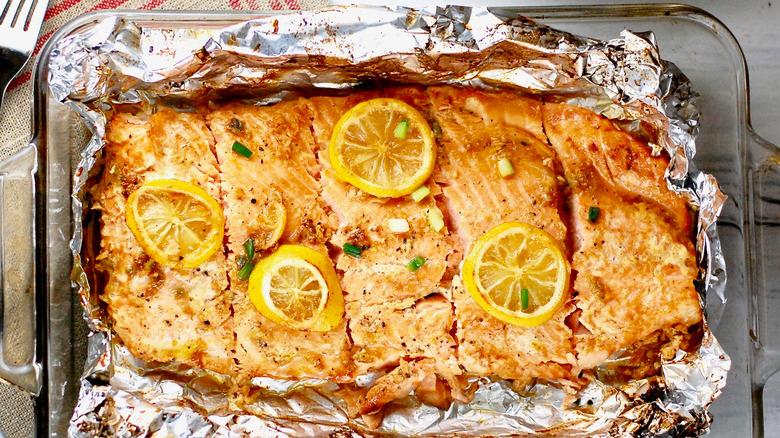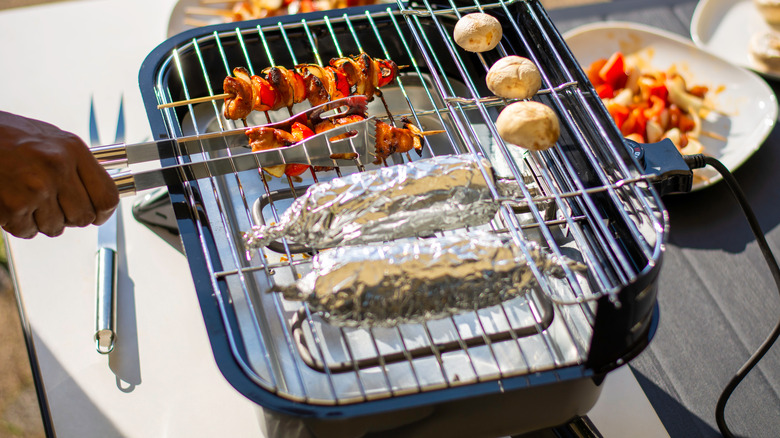Why We Cook With Aluminum Foil Instead Of Tin Foil
Aluminum foil is a staple of the kitchen these days, though there certainly are myths about aluminum foil that you shouldn't believe. This handy kitchen item is used for everything from covering casseroles in the oven to cooking vegetables on the grill and wrapping leftovers to store in the fridge. If we're not placing that used block of cheese into a ziplock bag, chances are we're covering it with some aluminum foil to help insulate it from the elements.
Aluminum foil is cheap, and it's easy to tear off perfectly sized sheets that can accomplish whatever culinary task is at hand. But aluminum foil wasn't always the main type of foil utilized in cooking and storage.
Prior to the 1940s, and dating back to the 19th century, people often packaged and heated foods using tin foil rather than aluminum foil (via All Recipes). Tin foil was once used in a range of different applications, including as insulation for electronics and even as dentist fillings. Both foils are made from alloys, a combination of at least one metal with another metal or nonmetal, but aluminum foil has reigned supreme today.
Aluminum foil is less expensive and more efficient than tin foil
Aluminum foil arrived on the food packaging scene in the early 1900s, initially used as a wrapper for candies such as Toblerone and Life Savers. There are several reasons why aluminum foil surpassed tin foil as the most popular foil used in cooking.
One of the most important factors behind the gradual consumer shift to aluminum involved its price tag. Aluminum costs less to manufacture than tin foil, per All Recipes. It is also more efficient in terms of its heat and electric conductivity and provides better durability than tin. And unlike tin, aluminum tends not to leave a literal "bitter" taste in your mouth when it contacts food.
According to Difference Between, World War II marked a turning point in the transition to aluminum due to wartime rationing of tin. During this time period, aluminum foil replaced tin foil as the most common form of food packaging, and the foil-going public never looked back. Eventually, tin foil was phased out altogether, and aluminum became the foil king of the kitchen. Now, we just wonder if it's safe to use aluminum foil in slow cookers.

